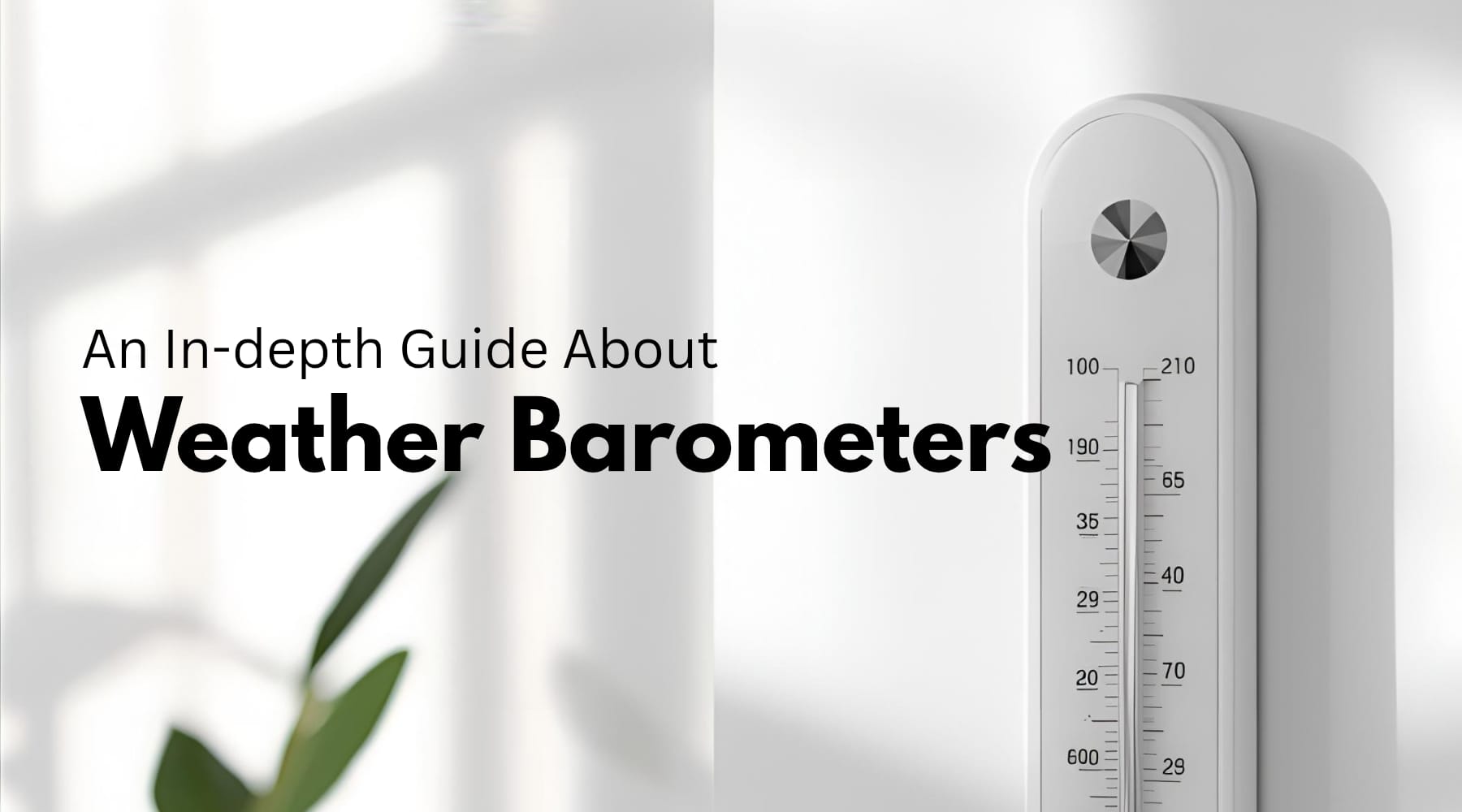(866)223-5699
(866)223-5699

Have you ever wondered how meteorologists predict the weather? Among the array of sophisticated instruments they employ, the humble weather barometer stands tall as one of the most essential and time-tested devices for weather forecasting. In this blog, we'll delve into the fascinating world of weather barometers, exploring their history, mechanisms, types, and how they play a vital role in helping us anticipate and prepare for weather changes.

The origins of the weather barometer can be traced back to the 17th century, with Evangelico Torricelli, an Italian physicist, often receiving credit. Torricelli invented the innovative mercury barometer in 1643, which demonstrated the concept of atmospheric pressure. Since then, numerous variations have arisen, but the fundamental principle of measuring atmospheric pressure to predict impending weather changes has remained unchanged.
Before we dive deeper into barometers, let's grasp the notion of atmospheric pressure. Our atmosphere exerts force on everything it surrounds due to the weight of the air above us. This force is what we call atmospheric pressure. Changes in atmospheric pressure are closely linked to weather changes, making it a crucial parameter for forecasting.
Weather barometers come in two main types: mercury barometers and aneroid barometers.
Mercury barometers consist of a long glass tube filled with mercury, inverted in a container of mercury. The height of the mercury column changes with fluctuations in atmospheric pressure. As the pressure rises or falls, the mercury column adjusts accordingly, allowing meteorologists to observe and measure these changes.
Aneroid barometers, a more portable and commonly used alternative today, do not use liquid mercury. Instead, they employ a sealed metal chamber with a flexible top. When atmospheric pressure changes, the chamber contracts or expands, which is mechanically linked to a pointer that indicates the pressure on a calibrated scale.
Apart from the traditional mercury and aneroid barometers, technology has paved the way for electronic and digital versions. Modern electronic barometers use sensors to detect pressure changes and display readings on screens. Some even offer additional features such as historical pressure graphs and weather trend predictions.
Rising or high barometric pressure typically indicates clear, stable weather, while falling or low pressure can signify the approach of storms, rain, or other atmospheric disturbances. By observing the trends and changes in barometric pressure over time, meteorologists can make informed predictions about the weather conditions to expect.

Weather barometers are not limited to professional meteorologists; they can be invaluable tools for everyday use too. Having a barometer at home allows individuals to gain a deeper understanding of their local weather patterns, helping them plan outdoor activities, gardening, or simply knowing when to expect changes in the weather.
Weather barometers are more than just historical relics; they are timeless devices that continue to play a significant role in modern weather forecasting. From their humble origins to the various types available today, these instruments have revolutionized our understanding of atmospheric pressure and its connection to weather patterns. Whether you're a weather enthusiast, a sailor, or simply curious about the forces that govern our climate, having a weather barometer can be both enlightening and practical. So, the next time you spot a barometer, take a moment to appreciate the scientific magic it holds and the crucial role it plays in shaping our daily lives.
Leave a comment